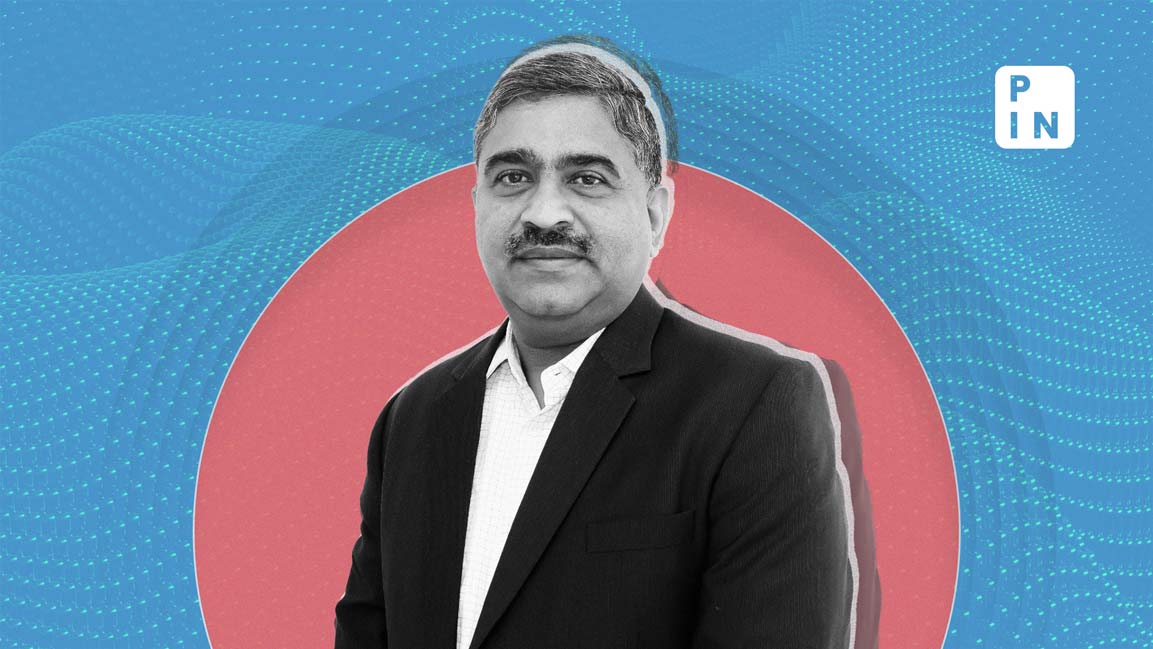- | 1:06 pm
Overcoming funding, regulatory gaps key for green energy transition: Radiance’s Manikkan
Refurbishing existing coal plants to make them compatible with green hydrogen can be an alternative strategy to reduce coal dependency, the CEO of Radiance Renewables said

Unlocking the full potential of India’s renewable energy sector hinges on overcoming financing hurdles and regulatory complexities, Manikkan Sangameswaran, executive director and chief executive officer of Radiance Renewables, said in an interview.
Public sector banks are hesitant to fund commercial and industrial solar projects because they are still learning about the projects’ specifics, apart from varying regulations across states are key hurdles for renewable energy ventures in India, the head of the Eversource Capital-backed firm said.
Renewable energy initiatives, particularly at the grid-scale, are often set up as special purpose vehicles (SPV). The complexity of managing compliance across numerous SPVs to satisfy regulatory and financing conditions is another key challenge, Sangameswaran added.
Edited excerpt:
What are the main hurdles India faces as it aims to reduce its dependence on coal?
Coal-based power plants are essential for providing base load and firm power and cannot be phased out immediately. The strategy involves gradually diminishing their contribution by shutting down older facilities and integrating renewable energy (RE) sources. Domestic coal-based thermal power still fulfills a significant portion of India’s energy requirements, making the reduction of coal dependency in the short term a challenge. Moreover, the power generated from wind and solar is variable and subject to weather conditions, necessitating the support of coal- and gas-based thermal plants for balancing and base load. Hence, the development of large-scale, economically viable grid-scale energy storage options is crucial to support and stabilize grid operations as the penetration of renewable energy increases, ultimately reducing reliance on coal-based power generation.
(Base load is the constant and minimum level of demand on the electricity grid that such plants, like those using coal, meet by operating continuously, while firm power refers to electricity that is reliably available at all times, provided by sources capable of consistent output to meet demand.)
How effective are India’s efforts to reduce its coal reliance?
India is progressing towards increasing the share of renewable power in its energy mix, with a target of 50% contribution from renewables by 2030. This goal is underpinned by plans to expand renewable energy capacity to 500 gigawatts (GW) by 2030. The government is implementing several initiatives, including grid-connected energy storage options supported by pumped storage hydro projects and/or battery energy storage solutions (BESS), offshore wind projects, and repowering of existing wind farms.
An alternative strategy to reduce coal dependency as round-the-clock renewable energy power becomes mainstream is to refurbish existing old coal plants to make them compatible with green hydrogen or solar thermal. Some countries are exploring small modular reactors, a nuclear power option, to address the intermittency of renewable power. Policy initiatives like the green hydrogen policy are facilitating the green transition.
In light of India’s renewable energy ambitions, where do you see gaps within the current infrastructure?
The power sector has seen significant investment, especially in enhancing transmission infrastructure with green energy corridors. Both state and private distribution companies have also heavily invested in updating the distribution network and its assets. However, as renewable energy projects pick up pace, the need for large-scale grid substations connected to the central transmission utility, comprehensive grid-connected energy storage systems, and adequate spinning reserves becomes critical to address infrastructure shortfalls effectively.
What stands in the way of funding for renewable energy ventures in India?
One of the main hurdles is the restrained engagement of public sector banks in financing commercial and industrial solar projects due to a learning curve with these projects and their regulatory environments across different states. There’s anticipation for the roll-out of infrastructure investment trusts, or INVITs, tailored for commercial and industrial renewable endeavors, mirroring those established for utility-scale projects. The adoption of the approved list of models and manufacturers (ALMM) for solar photovoltaic modules necessitates a broader acceptance from lenders towards domestic original equipment manufacturers. Extending the debt tenures to align with the 25 to 30-year lifespan of renewable energy assets and the creation of reliable renewable energy price forecasts recognized by financiers could significantly ease the funding of merchant renewable energy projects, currently hindered by short-term power purchase agreements.
How does India’s policy and regulatory landscape cater to the unique needs of renewable energy projects?
Renewable energy initiatives, particularly at the grid-scale, are often set up as special purpose vehicles (SPV), with commercial and industrial projects typically adopting captive or group captive special purpose vehicle, or SPV, structures. This setup mandates customers to consume at least 51% of the generated energy and hold a 26% equity share in the SPV. The complexity of managing compliance across numerous SPVs to satisfy regulatory and financing conditions is a noted challenge. However, recent legal clarifications and policy adjustments by the ministry of power, broadening the captive user definition to include subsidiaries, promise to streamline and simplify the commercial and industrial renewable energy sector’s operational framework.













